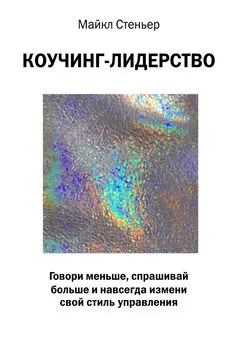Брюс Блумберг - ЖироГен. Почему мы едим все меньше, тренируемся все больше, а худеем все хуже
- Название:ЖироГен. Почему мы едим все меньше, тренируемся все больше, а худеем все хуже
- Автор:
- Жанр:
- Издательство:Издательство Питер
- Год:2019
- Город:СПб
- ISBN:978-5-00116-265-0
- Рейтинг:
- Избранное:Добавить в избранное
-
Отзывы:
-
Ваша оценка:
Брюс Блумберг - ЖироГен. Почему мы едим все меньше, тренируемся все больше, а худеем все хуже краткое содержание
Как токсичные примеси связаны с мутацией клеток?
Что делать, если диета и спорт не помогают сбросить вес?
Почему мы неумолимо толстеем?
Многие считают ожирение болезнью безвольных. Казалось бы, что может быть проще: забудьте дорогу в кондитерскую, запишитесь в фитнес-клуб – и лишние килограммы растают, как прошлогодний снег.
Увы, это работает далеко не всегда. Избыточный вес может появиться буквально из воздуха – из воздуха, отравленного химическими соединениями, разрушающими эндокринную систему и заставляющими нас полнеть. Жирогены находятся повсюду: в земле и воде, пище, мебели, посуде, косметике, детских игрушках и даже в лекарствах!
Но не спешите паниковать! Защититься от их влияния под силу каждому. Просто следуйте советам и рекомендациям во второй части книги. Вскоре ваше самочувствие заметно улучшится, и вы наконец обретете желанную форму!
ЖироГен. Почему мы едим все меньше, тренируемся все больше, а худеем все хуже - читать онлайн бесплатно ознакомительный отрывок
Интервал:
Закладка:
78
Barker D. J., Winter P. D., Osmond C., Margetts B., Simmonds S. J. Weight in infancy and death from ischaemic heart disease. Lancet . 1989; 2(8663): 577–580.
79
Caesar R., Tremaroli V., Kovatcheva-Datchary P., Cani P. D., Backhed F. Crosstalk between gut microbiota and dietary lipids aggravates WAT inflammation through TLR signaling. Cell Metab . 2015; 22(4): 658–668.
80
Pembrey M. E., Bygren L. O., Kaati G., et al. Sex-specific, maleline transgenerational responses in humans. Eur J Hum Genet . 2006; 14(2): 159–166.
81
Lind L., Lind P. M., Lejonklou M. H., et al. Uppsala consensus statement on environmental contaminants and the global obesity epidemic. Environ Health Perspect . 2016; 124(5): A81-A83.
82
Fagherazzi G., Vilier A., Saes Sartorelli D., Lajous M., Balkau B., Clavel-Chapelon F. Consumption of artificially and sugarsweetened beverages and incident type 2 diabetes in the Etude Epidemiologique aupres des femmes de la Mutuelle Generale de l’Education Nationale-European Prospective Investigation into Cancer and Nutrition cohort. Am J Clin Nutr . 2013; 97(3): 517–523.
83
Iliff J. J., Lee H., Yu M., et al. Brain-wide pathway for waste clearance captured by contrast-enhanced MRI. J Clin Invest . 2013; 123(3): 1299–1309.
84
Schernhammer E. S., Laden F., Speizer F. E., et al. Rotating night shifts and risk of breast cancer in women participating in the Nurses’ Health Study. J Natl Cancer Inst . 2001; 93(20): 1563–1568.
85
Zarrinpar A., Chaix A., Yooseph S., Panda S. Diet and feeding pattern affect the diurnal dynamics of the gut microbiome. Cell Metab . 2014; 20(6): 1006–1017.
86
Locke A. E., Kahali B., Berndt S. I., et al. Genetic studies of body mass index yield new insights for obesity biology. Nature . 2015; 518(7538): 197–206.
87
Environmental Working Group. EWG’s Tap Water Database. https://www.ewg.org/tapwater/#.WY0QxyZK3fE. Accessed August 10, 2017.
88
Jeffery E., Church C. D., Holtrup B., Colman L., Rodeheffer M. S. Rapid depot-specific activation of adipocyte precursor cells at the onset of obesity. Nat Cell Biol . 2015; 17(4): 376–385.
89
vom Saal F. S., Cooke P. S., Buchanan D. L., et al. A physiologically based approach to the study of bisphenol A and other estrogenic chemicals on the size of reproductive organs, daily sperm production, and behavior. Toxicol Ind Health . 1998;14(1–2): 239–260.
90
Oreskes N., Conway E. M. Merchants of Doubt: How a Handful of Scientists Obscured the Truth on Issues from Tobacco Smoke to Global Warming . 1st US ed. New York: Bloomsbury Press; 2010.
91
Norrgran Engdahl J., Bignert A., Jones B., Athanassiadis I., Bergman A., Weiss J. M. Cats’ internal exposure to selected brominated flame retardants and organochlorines correlated to house dust and cat food. Environ Sci Technol . 2017; 51(5): 3012–3020.
92
Mitro S. D., Dodson R. E., Singla V., et al. Consumer product chemicals in indoor dust: a quantitative meta-analysis of U. S. studies. Environ Sci Technol . 2016; 50(19): 10661–10672.
93
Oreskes N., Conway E. M. Merchants of Doubt: How a Handful of Scientists Obscured the Truth on Issues from Tobacco Smoke to Global Warming . 1st US ed. New York: Bloomsbury Press; 2010.
94
McConnell R., Shen E., Gilliland F. D., et al. A longitudinal cohort study of body mass index and childhood exposure to secondhand tobacco smoke and air pollution: the Southern California Children’s Health Study. Environ Health Perspect . 2015; 123(4): 360–366.
95
Katzmarzyk P. T., Lee I. M. Sedentary behaviour and life expectancy in the USA: a cause-deleted life table analysis. BMJ Open . 2012; 2(4).
96
Flegal K. M., Carroll M. D., Kit B. K., Ogden C. L. Prevalence of obesity and trends in the distribution of body mass index among US adults, 1999–2010. JAMA . 2012; 307(5): 491-497.
97
O’Rahilly S., Farooqi I. S. The genetics of obesity in humans. In: De Groot L. J., Chrousos G., Dungan K., et al., eds. Endotext . South Dartmouth, MA: MDText. com; 2000.
98
Sheldon W. The Varieties of Human Physique: An Introduction to Constitutional Psychology . New York: Harper & Bros; 1940.
99
Baillie-Hamilton P. F. Chemical toxins: a hypothesis to explain the global obesity epidemic. J Altern Complement Med . 2002; 8(2): 185–192.
100
United States Senate Select Committee on Nutrition and Human Needs. Dietary Goals for the United States . Washington, DC: US Government Printing Office; 1977.
101
Grun F., Watanabe H., Zamanian Z., et al. Endocrine-disrupting organotin compounds are potent inducers of adipogenesis in vertebrates. Mol Endocrinol . 2006; 20(9): 2141–2155.
102
Heindel J. J., Blumberg B., Cave M., et al. Metabolism disrupting chemicals and metabolic disorders. Reprod Toxicol . 2017; 68: 3–33.
103
Trasande L., Zoeller R. T., Hass U., et al. Estimating burden and disease costs of exposure to endocrine-disrupting chemicals in the European Union. J Clin Endocrinol Metab . 2015; 100(4):1245–1255.
104
Bennett W., Gurin J. The Dieter’s Dilemma: Eating Less and Weighing More . New York: Basic Books; 1982.
105
Ratajczak M. Z., Bartke A., Darzynkiewicz Z. Prolonged growth hormone/insulin/insulin-like growth factor nutrient response signaling pathway as a silent killer of stem cells and a culprit in aging. Stem Cell Rev . 2017; 13(4):443–453.
106
Wei H., Averill M. M., McMillen T. S., et al. Modulation of adipose tissue lipolysis and body weight by high-density lipoproteins in mice. Nutr Diabetes . 2014; 4:e108.
107
Chamorro-García R., Sahu M., Abbey R. J., Laude J., Pham N., Blumberg B. Transgenerational inheritance of increased fat depot size, stem cell reprogramming, and hepatic steatosis elicited by prenatal exposure to the obesogen tributyltin in mice. Environ Health Perspect . 2013; 121(3): 359–366.
108
Skinner M. K., Manikkam M., Tracey R., Guerrero-Bosagna C., Haque M., Nilsson E. E. Ancestral dichlorodiphenyltrichloroethane (DDT) exposure promotes epigenetic transgenerational inheritance of obesity. BMC Med . 2013; 11:228.
109
Можно привести аргумент о том, что сироп с высоким содержанием фруктозы нарушает передачу гормональных сигналов совсем не так, как полагает Агентство по охране окружающей среды США. Такой взгляд на эндокринные нарушения весьма ограничен. Нарушение какого-либо из сигнальных путей гормонов (например, лептина, инсулина, гормона роста и т. д.) имеет неблагоприятные биологические последствия, которые необходимо учитывать. Еще более важно то, что нарушение любых сигнальных путей в клетке, даже если это не пути гормонов, может привести к изменению биологических функций. Мой японский коллега Йун Канно ввел понятие «токсичность сигнала» для выявления химических веществ, которые нарушают рецепторные сигнальные пути в клетке. Эта концепция значительно расширяет область эндокринных нарушений: токсичность сигнала следует также включить в причины нарушения обмена веществ.
110
Taheri S., Lin L., Austin D., Young T., Mignot E. Short sleep duration is associated with reduced leptin, elevated ghrelin, and increased body mass index. PLoS Med . 2004; 1(3):e62.
111
Jeffery E., Church C. D., Holtrup B., Colman L., Rodeheffer M. S. Rapid depot-specific activation of adipocyte precursor cells at the onset of obesity. Nat Cell Biol . 2015; 17(4): 376–385.
Интервал:
Закладка:










